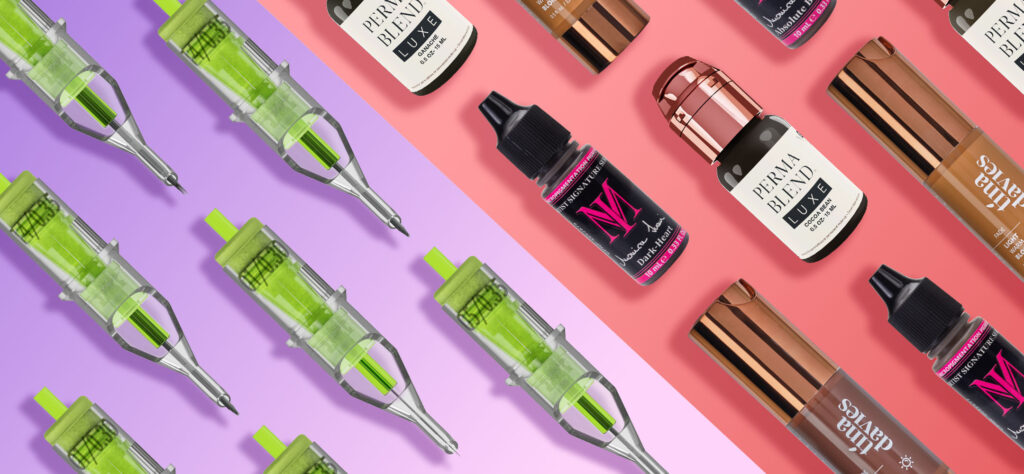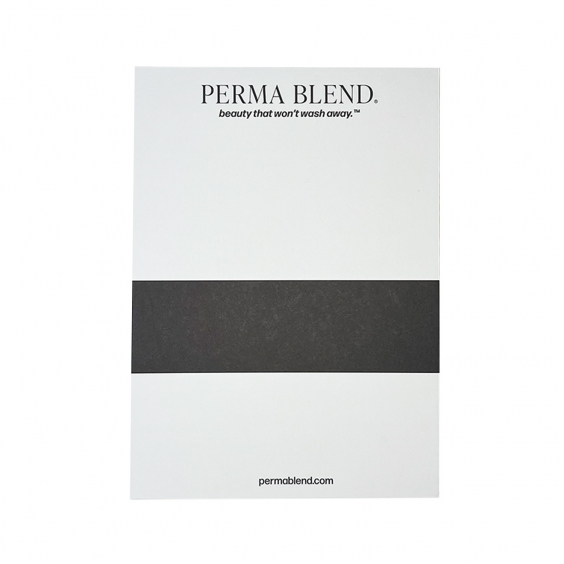What are the best needle cartridges and pigments for brows?
When you embark on your permanent makeup journey, you’re bound to have a lot of questions about the materials and tools you should be using - and while your teacher should be on hand to help, we also want to provide you with the information you need to make the best possible choices!
If you’re eager to discover some new brands of cartridges and pigments, or get recommendations from your PMU heroes, read on!
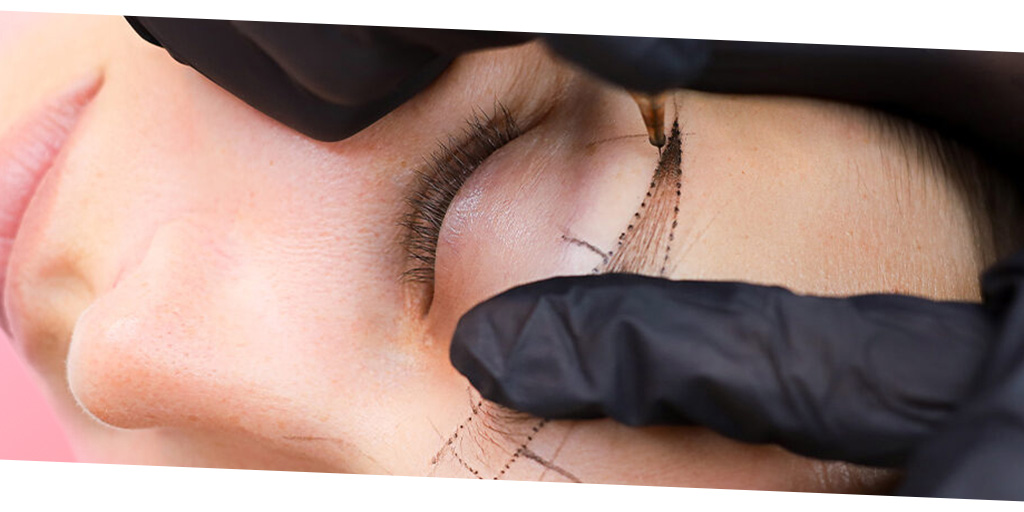
What are the best needles for brows?
That entirely depends on the style of brows you offer! If you’re dedicated to powder brows, you’ll likely use a different set of needles than someone would for hair stroke brows. The more options you offer, the more needles you’ll need.
Best needles for nano brows
For nano brows - also known as hair stroke brows - we find that artists tend to lean towards round liner configurations. 1, 3 or 5 round liners can be used, depending on how fine the hair strokes need to be - the smaller the needle diameter, the more delicate the stroke.
Best needles for ombre brows
For ombre and combination brows, artists will still use round liners but may go for a slightly large size. Alternatively, round shaders, flat or curved magnums might be used, depending on the area that needs shading.
However it’s not uncommon for more experienced artists to shade using round liners as well as for the outline. We’ve noticed a real rise in the popularity of nano needles such as 1RLs with a 0.25 or 0.20 mm diameter, but this is up to personal preference.
While you’re experimenting, we’d recommend picking up a sample pack like our Stellar 2.0 sample packs which are available in Basic, Fine Line, Traditional and Large Magnum types. You should always practise on fake skin before tackling a real person with a new piece of equipment!
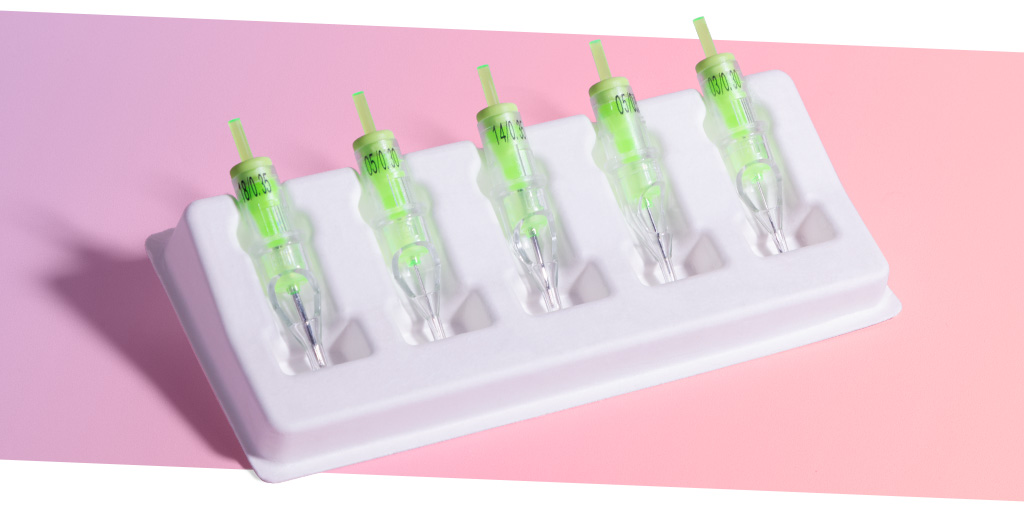
What do I need to look for when buying PMU cartridges?
Every needle cartridge that we sell on our website comes from a reputable brand, and contains all necessary safety and hygiene features. However, if you have to look elsewhere, here’s what you should be looking out for!
Sterile Blister Packaging - this should be obvious, but you should only be using sterile, single-use needles that come in their own blister packaging and have been sterilised to prevent cross-contamination and bacterial infection.
Safety Membrane - once upon a time, these weren’t so common, but now it’s essential that your cartridge contains a safety membrane. These have a dual purpose - they prevent pigments and other fluids from seeping back up and damaging your machine, and they help to draw the needle into the cartridge shell when it isn’t being used to avoid accidental scratches!
Stainless Steel Needles - your cartridges should contain high-quality, razor sharp needles for the best possible implantation and minimal trauma. The entire Stellar 2.0 range is made from 304 stainless steel, which takes a sharp edge very well and holds it, so you’ll need to change your needle out less often!
Transparent Tip - not essential, but transparent tips allow you to more easily make slight needle adjustments, and to see how much pigment is still in your cartridge and on your needle, making it easier to keep track of pigment flow!
Long vs Short Taper - the taper of the needle is something very important to consider, as results can vary depending on the taper length, technique and your client’s skin type. Short taper needles create a larger puncture wound, implanting pigment faster but causing more trauma, while long tapers create smaller punctures. For many micropigmentation procedures you’ll want to do multiple passes, which is why longer tapers are preferred to minimise skin trauma.
Universal Connection - not all cartridges fit all machines, so make sure you pay attention to the connection type! Most of the needles we sell come with a universal connection, making them compatible with amazing machines like the Perma Pen Signature, the Microbeau Xion S or the Peak Astra.
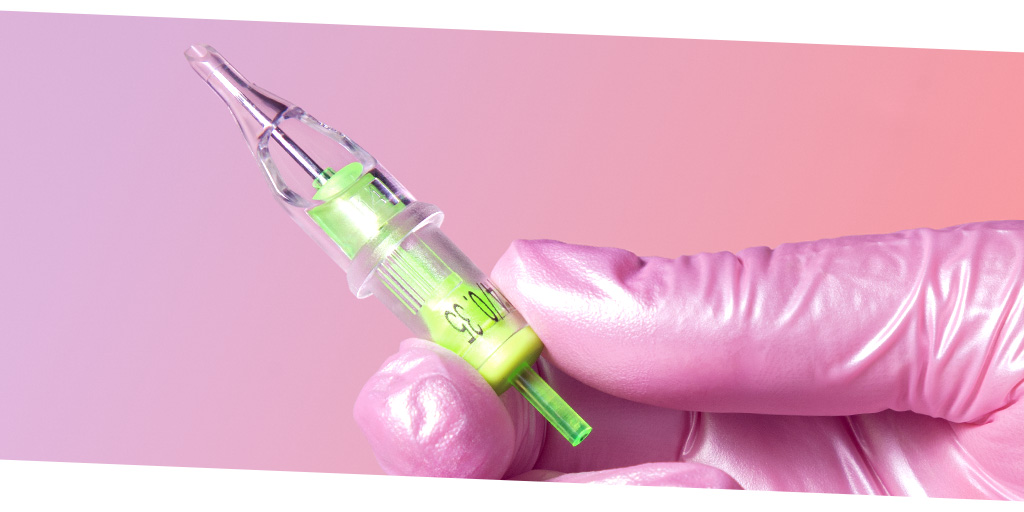
What needles do PMU artists recommend?
Stellar 2.0 needles are the new big favourites for many PMU artists - they have unrivalled stability, which aids in the precision of your work! The round liner collection is particularly good for ultra-fine strokes and crisp outlines, and also come in hollow and textured needle variations.
As an alternative, many artists enjoy the Kwadron PMU Optima range of cartridges, although we are seeing more and more turning to the Stellar 2.0 range for reliable precision.
Sample packs are a must-have if you’re wanting to try a new brand or configuration of needles - and make sure to utilise that practice skin!
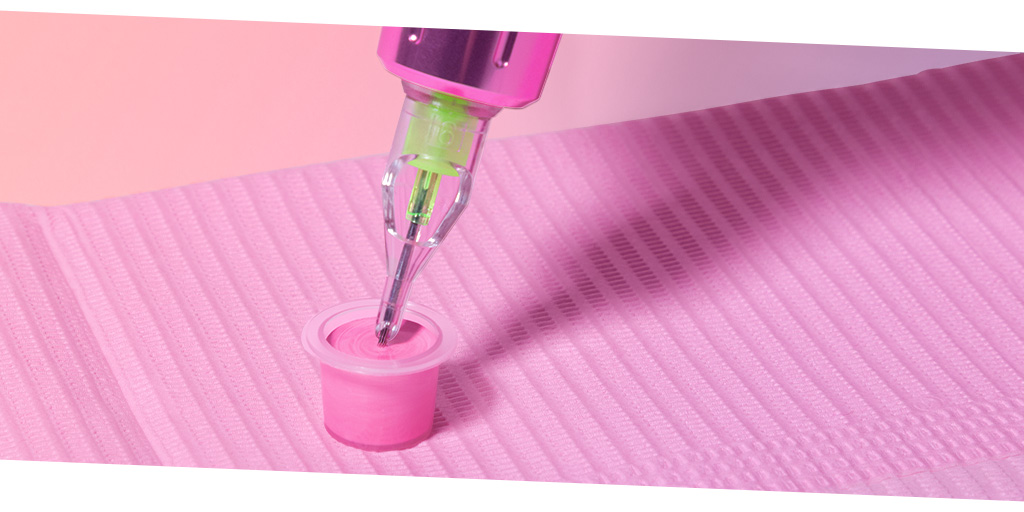
What are the best brow pigments?
There are so many things to consider when choosing the right pigment for your client’s brows, including their undertones, preferences, brands, and any modifications or corrections you might want to make.
You can check out our blog on selecting the right pigment for microblading, but you’ll need a different set of pigments for machine treatments on the brow.
Make sure that you know the pigment you’re using well, either by using a drawdown pad to see the undertones and opacity for yourself, or by practising first on synthetic skin.
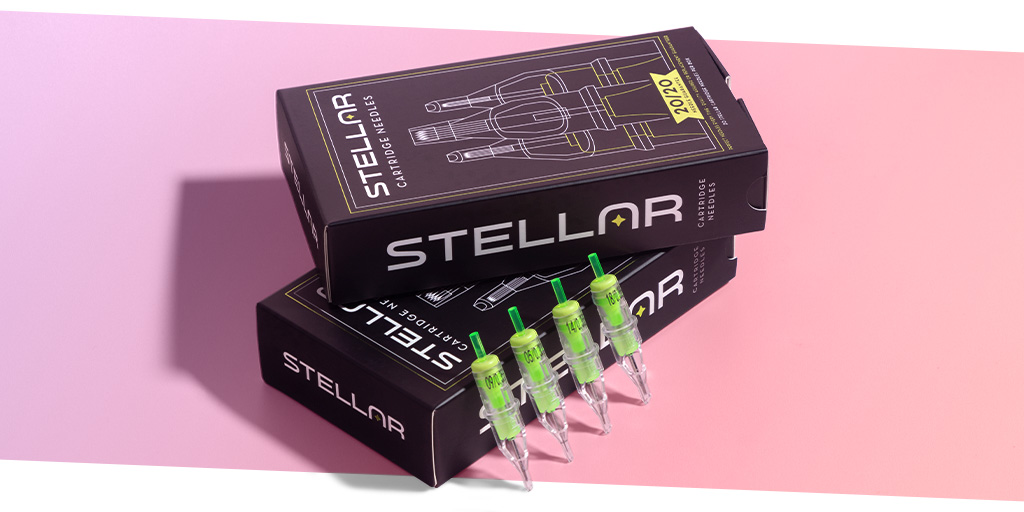
How do I choose the right pigment?
Fully Tested and Approved - you shouldn’t ever forget that the pigments you’re using are implanted into the human body, and need to be safe. It’s increasingly rare for pigments to cause an allergic or adverse reaction, but only fully lab-tested pigments that meet the necessary safety requirements should be used.
Pigment Shades and Modifying - we’d always suggest that eyebrow artists invest in a diverse set of pigments that work with a variety of skin tones and hair colours, such as the Tina Davies brow pigments in the I Love Ink Eyebrow set or the Perma Blend Luxe Ready, Set, Go set which is pre-modified for ease of use.
Ensuring you have pigments suit a vast range of skin tones is also crucial – one of our top recommendations is the Perma Blend LUXE Chocolate Collection, which has been carefully created for high-melanin skin types.
Pre-modified pigments are the easiest to use, but modifying or correcting pigments yourselves gives you greater control over the finished effect - especially once you’ve developed a good sense of colour theory. We sell a wide selection of modifiers and correctors, including brands like Quantum, Artyst and Li Pigments.
Organic vs Inorganic - understanding the chemical composition of your pigments is essential to understanding how they’ll heal and look over time. Organic pigments are usually carbon-based, and are more vibrant and long-lasting, whereas inorganic pigments are a little more muted in colour and can fade quicker, making them perfect for beginner artists.
Your choice of organic, inorganic or hybrid pigments will come down to experience and preferences, but both types have their own uses! Make sure to read all about the differences on our dedicated Organic vs Inorganic Pigments blog.
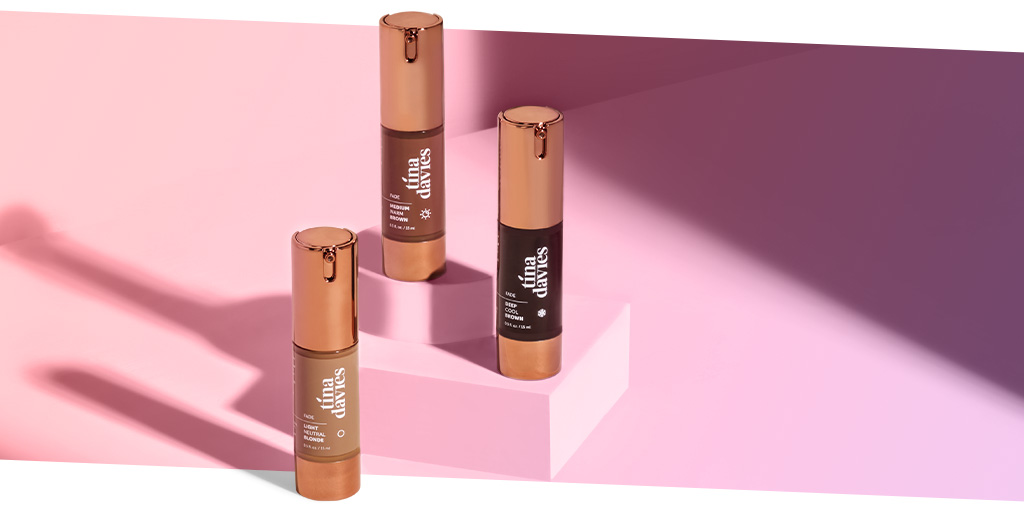
Which pigments are great for beginners?
If you’re at the beginning of your PMU journey, we’d highly recommend using the Tina Davies FADE set. These pigments are mostly inorganic, and are designed to fade gently over 12-24 months, making them perfect for new artists as well as clients who want to try out a new look before committing!
Alternatively, the Monica Ivani Signature Series is also made with inorganic-based pigments and are great for soft brow effects. This set is particularly useful as it contains a colour chart detailing the colours in each pigment, and the thicker consistency of these pigments make them ideal for beginners who work more slowly (more experienced artists can use these pigments by mixing them with a shading solution.)
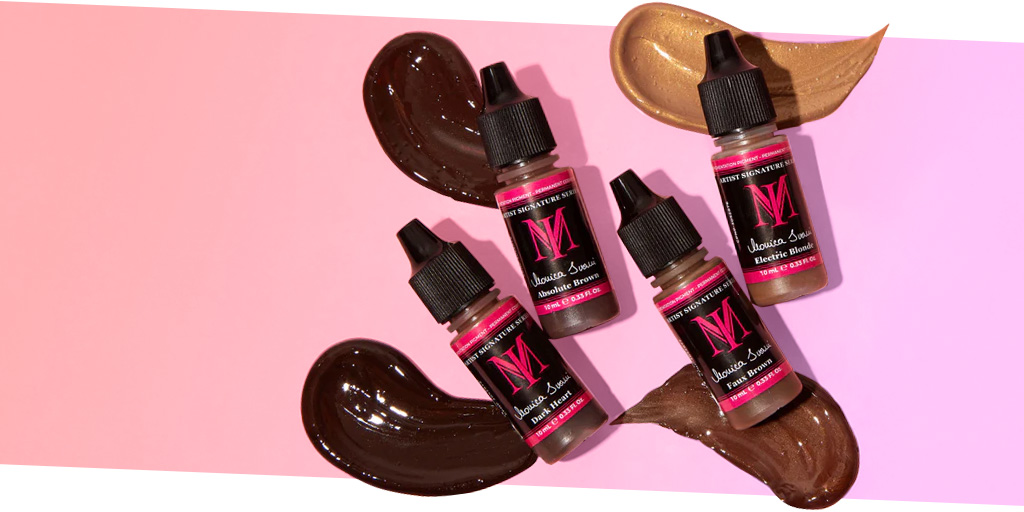
Which pigments are great for experienced artists?
Once you have more experience, a better grasp of colour theory and the technical knowledge to support your work, you can move onto organic pigment collections. These pigments will typically appear brighter and more saturated, so it can be easy to overdo it with disastrous results. Organic pigments are also more prone to fading to a cool grey or blue tone, so might need some pre-modifying.
Some of the lines we’d recommend for more experienced brow artists include Perma Blend LUXE’s Brow Chicka Wow Wow set, which contains 7 brow pigments along with a warming modifier, and The Chocolate Collection, which has a more organic, long-lasting formulation – specifically for melanin-rich clients.
Moving from inorganic to organic isn’t an essential step for PMU artists - chances are that as your skills develop, you’ll find it easier to identify which type of pigments to use on your client depending on their skin type, colour and undertones, and the treatment type.
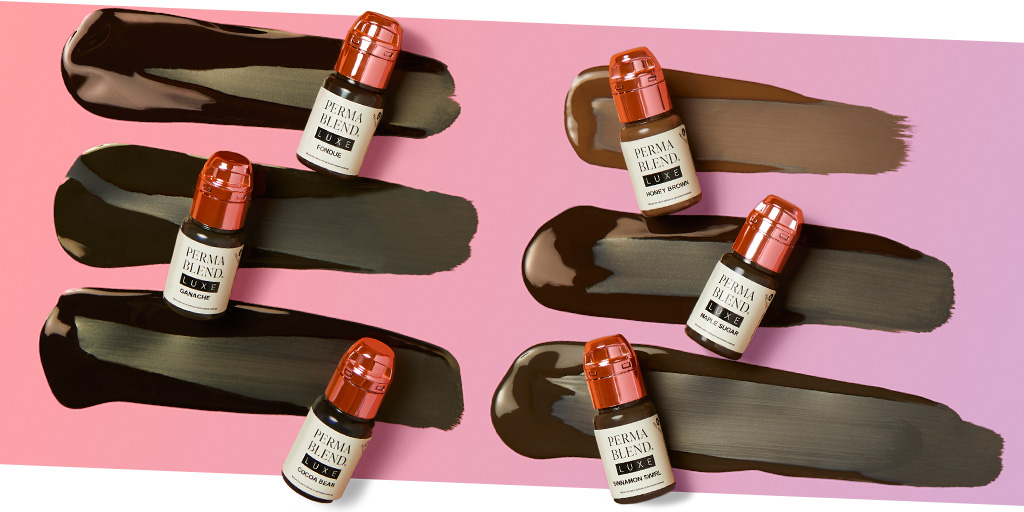
So there it is! Everything you need to know when it comes to picking out the right needle cartridge and pigment for your brow treatments - plus a few of our top picks.
Our customer service team are always on hand to help with any queries you have, so feel free to call us on 0151 708 0000 or message us on social media @killerbeautypmu!
